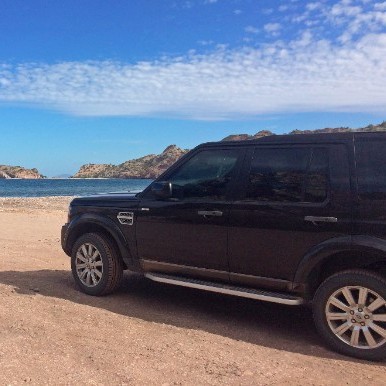
Baja has always been a popular destination for expats, retirees, digital nomads, and adventure seekers. With its scenic coastlines, warm climate, relaxed lifestyle, and proximity to the U.S., it’s easy to see why. Whether you’re planning a full-time relocation or looking for a part-time escape, here’s a guide to help you get started.
1. Choose Your Destination in Baja California
Most regular Baja travelers probably have a good idea of where they would like to move. In Baja California (norte), cities like Tijuana, Ensenada, Rosarito, and San Felipe are popular ex-pat homes because of the low cost of living and proximity to the border. In Baja Sur, La Paz, Los Cabos, Todos Santos and Loreto are all popular choices with the warm weather, beaches, and relaxed lifestyle.

2. Check Visa Requirements
For short-term stays, U.S. and Canadian citizens can enter Mexico as tourists for up to 180 days with just a FMM tourist permit.
For long-term stays or a permanent move, you’ll need a temporary or permanent resident visa:
–Temporary Resident Visa (valid for 1-4 years): Great for retirees or remote workers.
–Permanent Resident Visa: For those planning a long-term stay or retirees with higher income.
You will need to start the process for a temporary or permanent resident visa through a Mexican consulate in your home country.
3. Consider Healthcare Options
Mexico offers affordable healthcare, and Baja has good private hospitals and clinics. There are a few options for how to handle healthcare:
–Out-of-pocket medical payments which is often much cheaper than in the U.S.
–Private insurance is a popular choice for more wealthy Mexicans and a lot of ex-pats. There are both local and international plans.
–IMSS, Mexico’s public healthcare, is an option once you become a resident.
4. Figure Out Housing
You have two options when moving to Baja:
-We always recommend renting first to get a feel for the area. Monthly costs vary widely from $500 to small towns to well over $1,000 in more popular tourist areas.
-Foreigners can buy property in Baja through a bank trust (fideicomiso) or Mexican corporation. Always work with a reputable real estate agent and lawyer who will help you navigate the process.

5. Bring or Buy a Vehicle
If you are staying short-term in Baja, you do not need to import your vehicle (if you are going to mainland Mexico, a temporary importation permit for your vehicle is required). Your vehicle is valid for as long as your FMM tourist permit is (up to 180 days).
If you will be staying long-term in Baja, you have two options:
-You can import your vehicle using a Mexican customs broker. There are some limitations to this as the vehicle may not be more than 9 years old and some makes and models are excluded.
-Many ex-pats choose to buy a used vehicle in Mexico.
For any of these options, don’t forget to make sure you have Mexican auto insurance for your vehicle!
6. Learn the Basics of Spanish
While English is spoken in many tourist areas, speaking Spanish goes a long way and helps you build local connections, navigate everyday tasks more easily, and avoid misunderstandings. Consider taking classes or using a language app like Duolingo or Babbel.
7. Understand the Cost of Living
Life in Baja can be much cheaper than in the U.S. or Canada, depending on your lifestyle. In most areas groceries, rent, and utilities will cost 30-60% less. Dining out and other entertainment is budget-friendly. Keep in mind that prices will be higher in tourist areas such as Los Cabos and Todos Santos.
8. Plan for Banking and Finances
Notify your U.S./Canadian bank of your move and consider a no-fee international debit card like Charles Schwab or Wise. ATMs are available in most cities, but it’s wise to use the ones that are at banks rather than a stand alone ATM if given the choice. Keep in mind there are remote parts of the peninsula where there are no ATMs and credit cards are not accepted. You should plan to open a Mexican bank account if you are staying long-term in Mexico. Check with your local branch of the bank for requirements.
9. Stay Safe and Legal
Baja is generally safe, especially in expat and tourist communities. Still, use common sense as you would when traveling anywhere by avoiding sketchy areas, not flashing cash or expensive jewelry and being mindful at night. It’s always a good idea to keep copies of your immigration documents with you.
Follow all Mexican laws, including road rules and local regulations. Ignorance of the law is not an excuse and could land you in jail depending on the offense. Mexico has a different approach to the law and you’re not innocent until proven guilty. In Mexican criminal law, one is guilty until proven innocent.
10. Connect with the Community
Join online expat groups on Facebook, attend local meetups, and talk to people. Baja has a vibrant expat community happy to help newcomers. These groups are a wealth of information for local tips and resources. On Facebook, look for general Mexican ex-pat groups as well as groups that are specific to your chosen location.
